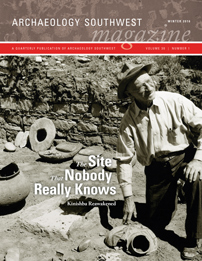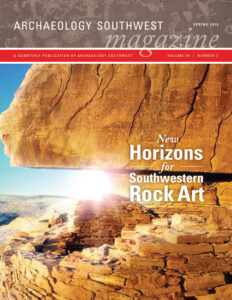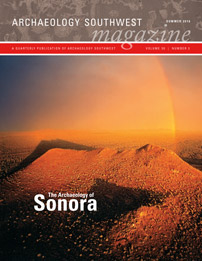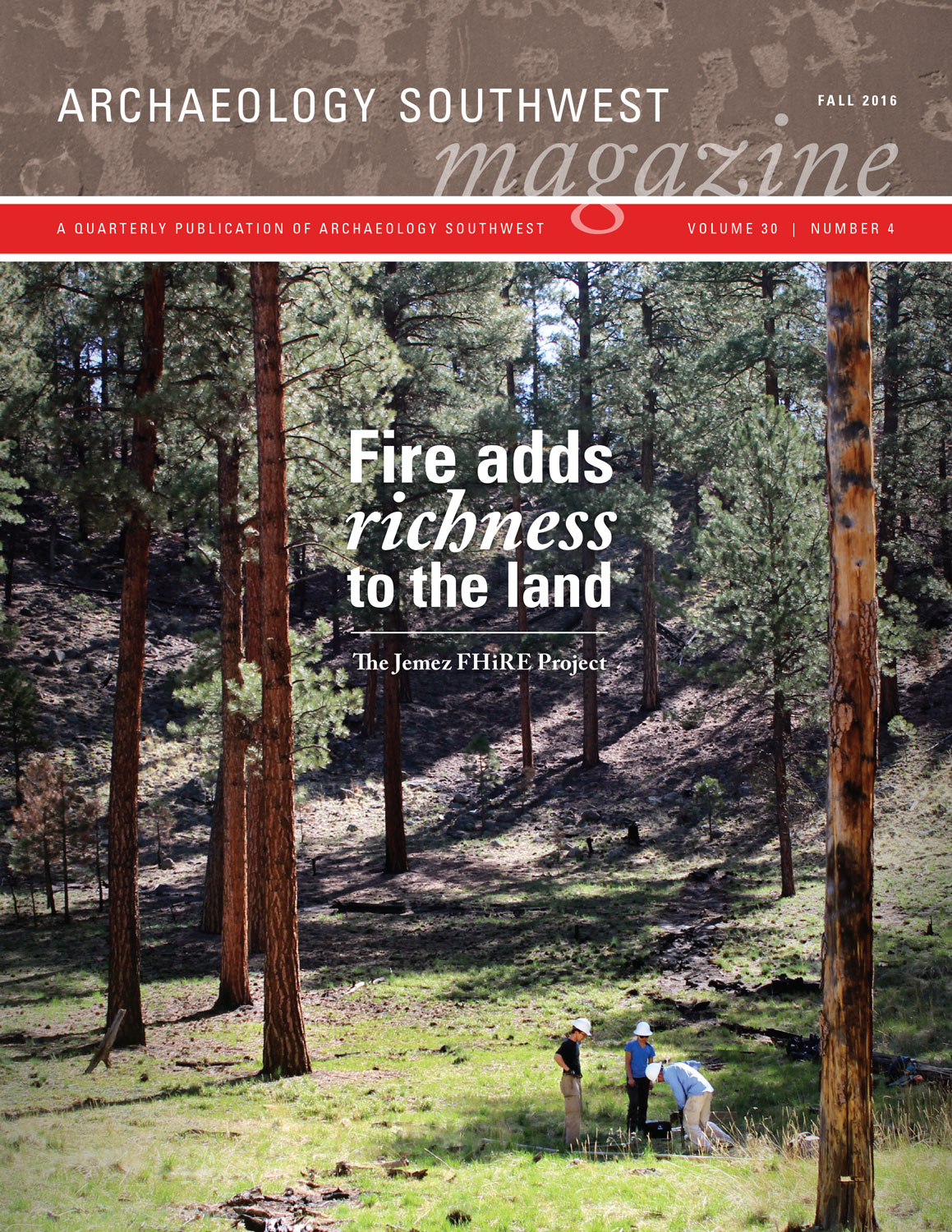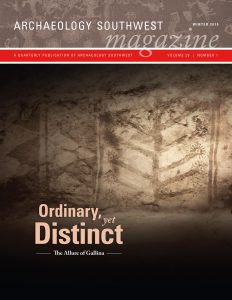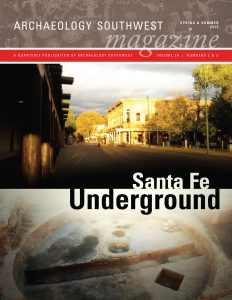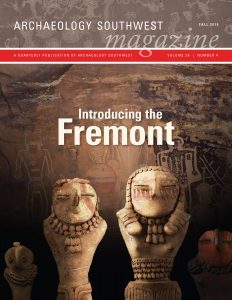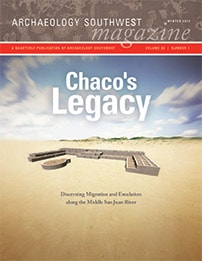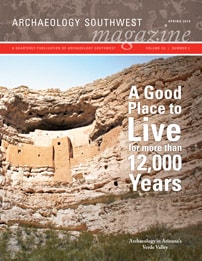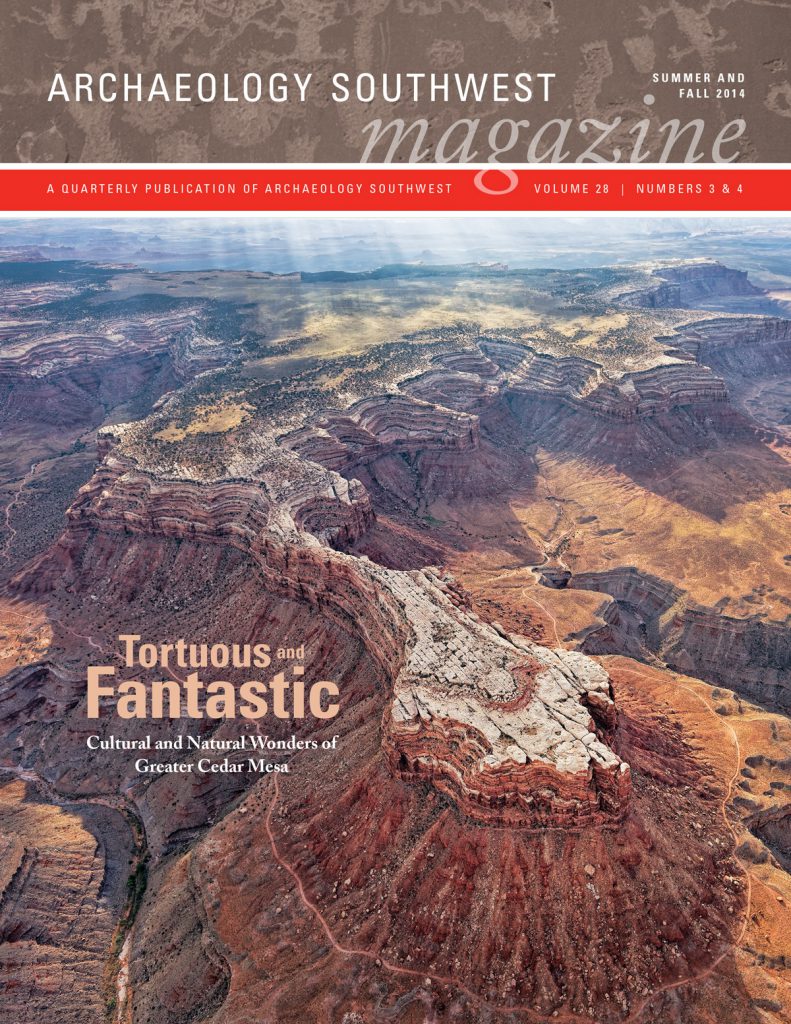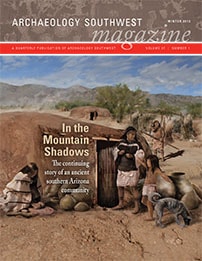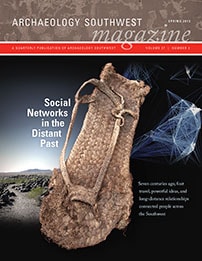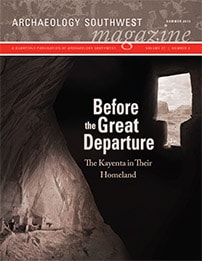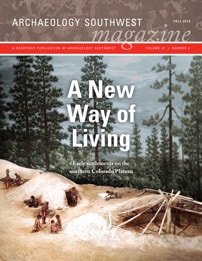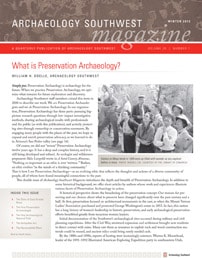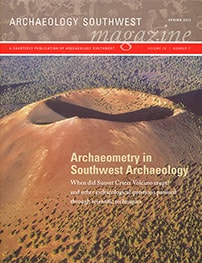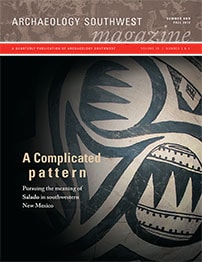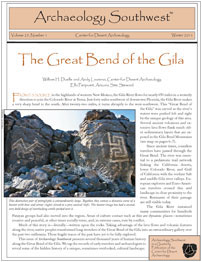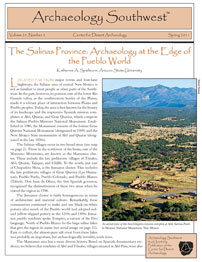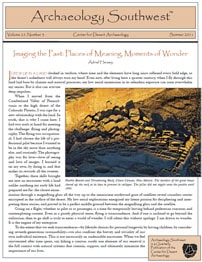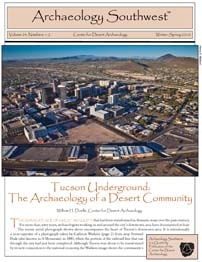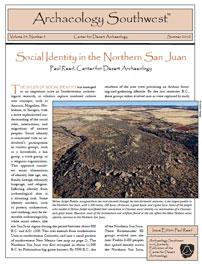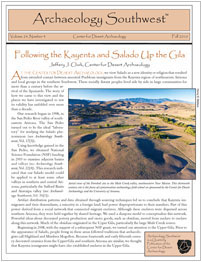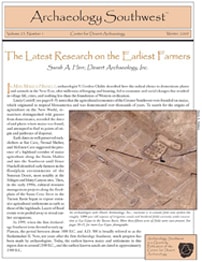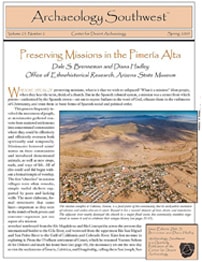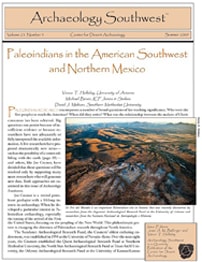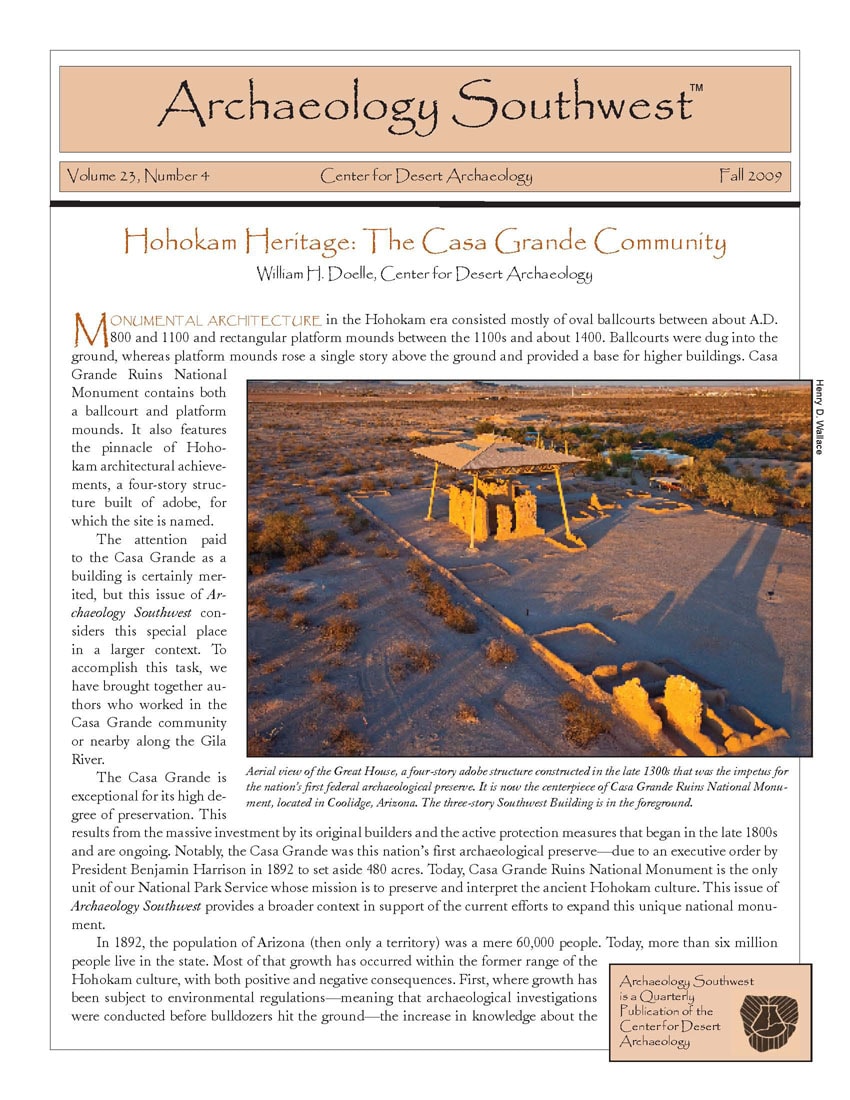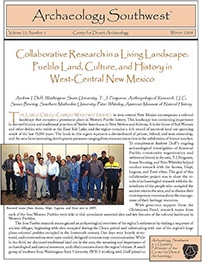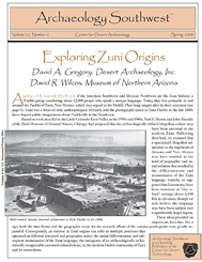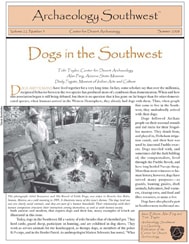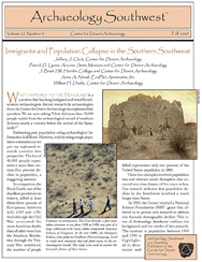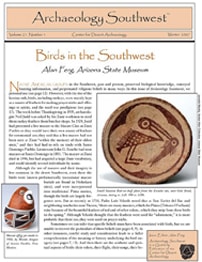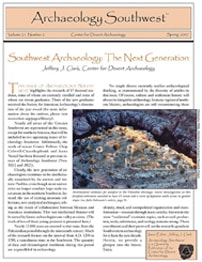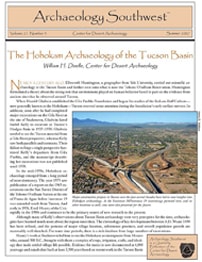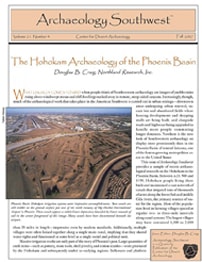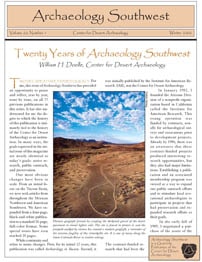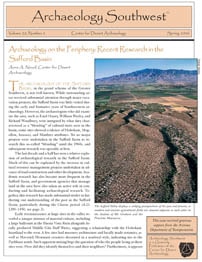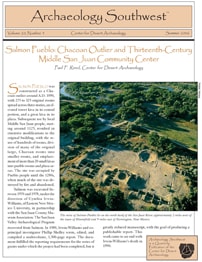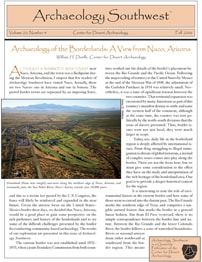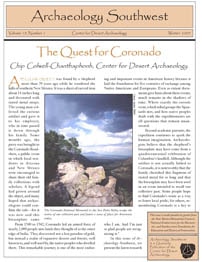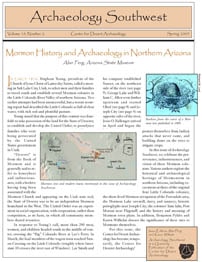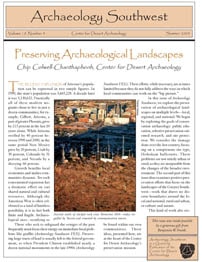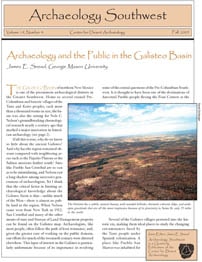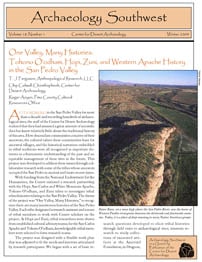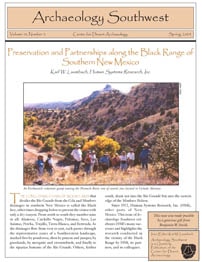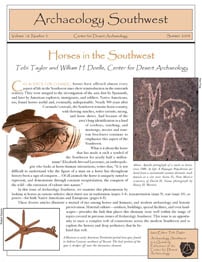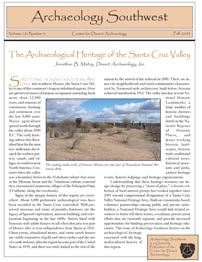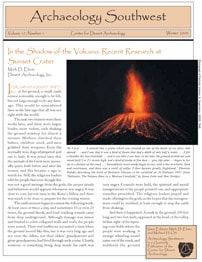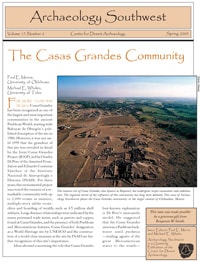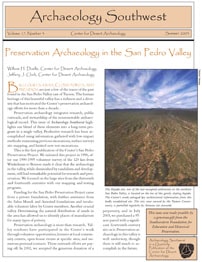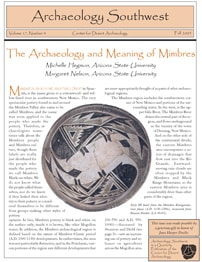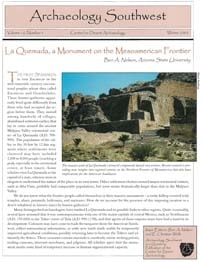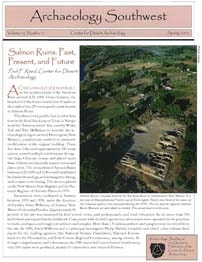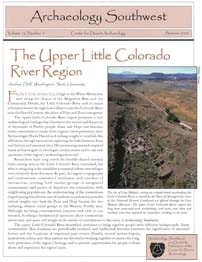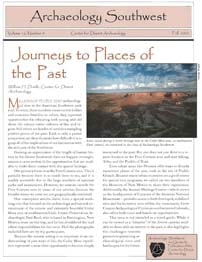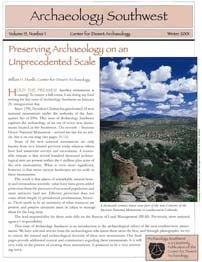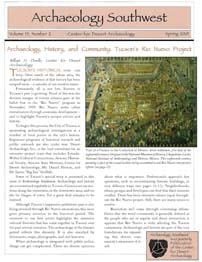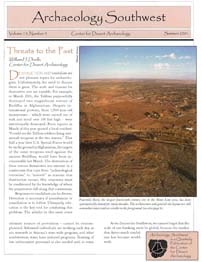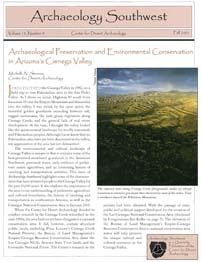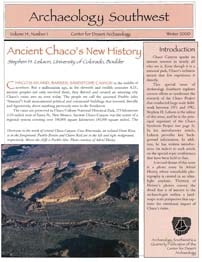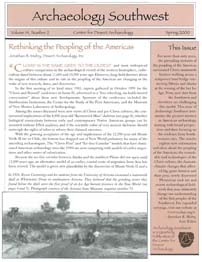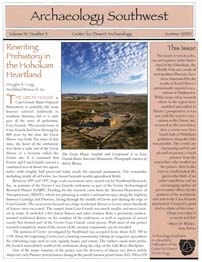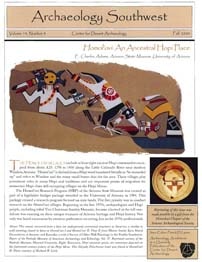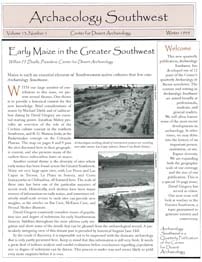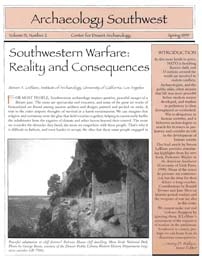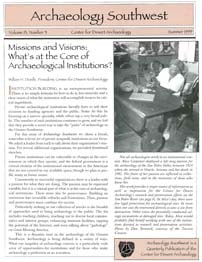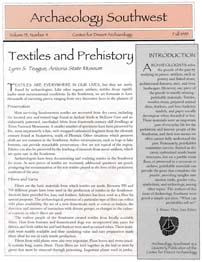Once a magazine is five years old or older, we make it available to the public free of charge. Please enjoy our archive of older Archaeology Southwest Magazine issues. If you scroll all the way down on this page, you will even find links to issues of the magazine’s predecessor, Archaeology in Tucson.
Want something more recent? Purchase individual issues in our bookstore. Or, become a member today, and enjoy free PDF downloads of recent and current issues, among other benefits.
2016 (Volume 30, Number 1-4)
2015 (Volume 29, Numbers 1-4)
2014 (Volume 28, Numbers 1-4)
2013 (Volume 27, Numbers 1-4)
2011-2012 (Volume 25, Number 4 and Volume 26, Numbers 1-4)
2011 (Volume 25, Numbers 1-3)
|
|
|
2010 (Volume 24, Numbers 1-4)
2009 (Volume 23, Numbers 1-4)
|
|
2008 (Volume 22, Numbers 1-4)
|
|
|
2007 (Volume 21, Numbers 1-4)
2006 (Volume 20, Numbers 1-4)
2005 (Volume 19, Numbers 1-4)
2004 (Volume 18, Numbers 1-4)
|
|
|
2003 (Volume 17, Numbers 1-4)
|
|
2002 (Volume 16, Numbers 1-4)
2001 (Volume 15, Numbers 1-4)
|
|
|
2000 (Volume 14, Numbers 1-4)
1999 (Volume 13, Numbers 1-4)
ARCHAEOLOGY IN TUCSON
From 1986 to 1998, when Archaeology Southwest was still the Center for Desert Archaeology, our primary publication was entitled Archaeology in Tucson. Although some of this material may be a bit dated, we provide this newsletter as a resource for historical and archaeological research.
In Search of El Presidio de Tucson, The Tucson Meteorite, Lost Spanish-Colonial Artifacts (12-3)
Tucson’s Chinese Gardeners, Snaketown on the Santa Cruz-The Valencia Vieja Site (12-2)
Cerro de Trincheras, Rediscovering the Tucson Presidio (12-1)
Pioneers of the Santa Catalinas, Ranching in Southern Arizona Before the Twentieth Century (11-4)
Early Agriculture in the Southwest, Recent Discoveries at Cienega Phase Sites (11-3)
Hohokam in the Tucson Basin, The Archaeology of the Tortolita Phase (11-2)
A Brief History of Phoenix Archaeology, Archaeology of Las Canopas, Phoenix Indian School (11-1)
The People Behind the Rocks, Stone Tool Technologies, Reading Ground Stone Wear Patterns (10-4)
Building Tucson in the Nineteenth and Twentieth Centuries (10-3)
Tracing the Production of Rincon Ceramics, Classic Period Projectile Points, Hohokam Rock Art (10-2)
The Archaeology of an Ancient Town, Los Morteros, 1822 Spanish Coin found on Cienega Creek (10-1)
A Thousand Years of Irrigation in Tucson, Ancient Canals, Cienega Valley Survey Update (9-4)
Highlights of Tonto Basin Prehistory, Architectural Reconstruction of the Griffin Wash Site (9-3)
The Classic Period on the San Pedro River (9-2)
Shell and Obsidian in Classic Hohokam Society, Excavations at the Marana Community (9-1)
A Hohokam Village in the Foothills, The Gibbons Spring Site, Archaeology along the Interstate (8-4)
Preceramic Archaeology of the Tucson Basin, Milagro Site (8-2)
Kentucky Camp: Big Dreams, Small Prospects, Calabasas Park Archaeology (7-4)
Archaeology in the Heart of Downtown Tucson, Tucson Presidio, Archaeological Dating (7-3)
Hidden Heritage Resources of the Southwest: The Western Archeological and Conservation Center (7-2)
In Search of the Sobaipuri Pima, The Construction and Architecture of Casa Grande (7-1)
Hohokam Reservoirs, Tucson Presidio Excavations (6-4)
Northern Tucson Basin Archaeological Survey (6-3)
Old Presidio Cemetery Encountered in Downtown Tucson (6-2)
Excavations at the Rooney Ranch Site, Rincon Period Hohokam Archaeology (6-1)
Hohokam T-Shaped Stones (aka “Fergoliths”) Part II (5-4)
Hohokam T-Shaped Stones (aka “Fergoliths”) Part I (5-3)
Urban Archaeology in Tucson, Excavations at the Ronstadt Transit Center (5-2)
Volunteers Aid Site Preservation, Coyote Mountains, San Pedro Survey Update (4-3)
Thousand Year Old Census, Tucson in AD 990 (Hohokam Demography in the Tucson Basin) (4-2)
San Pedro River Prehistory, Tucson Presidio (4-1)
Gunsight Mountain, Sabino Canyon Ruin (3-3)
Return to Honey Bee Village (3-2)
Ancient Adobe Walls Uncovered, Los Morteros (2-5)
Excavations at Los Morteros (2-4)
Arizona Archaeology Week (2-3)
Institute for American Research Celebrates its 20th Year (2-2)
Romero Ruin Tour, Pottery and Tucson’s Past (2-1)
San Agustin Mission, & Research at Catalina State Park (1-4)
San Agustin: The Original Tucson (1-3)
Petroglyphs and Platform Mounds (1-2)
Introduction to Archaeology In Tucson, and the Institute for American Research (1-1)
